View from the Hill 15th August 2021
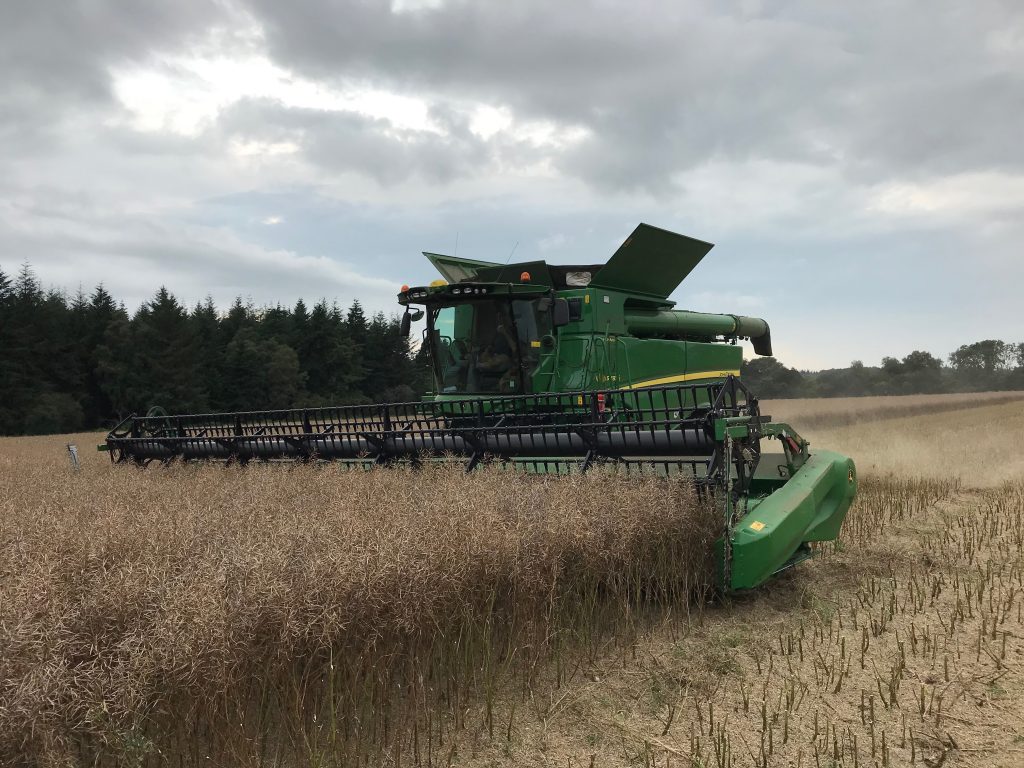
Probably best not to discuss harvest in too much detail while we are in the middle of a very frustrating period of wet/dry. We cannot cut unless the crop is dry. Hopefully by the time this piece sees the light of day all will be a dim memory and we will be fretting about whether our newly sown rape will survive the winter. In a nutshell, all the winter barley is safely gathered in, so the best beers are safe for another season. Most of the rape is cut, sadly once again unimpressive compared to 5 years ago due to flea beetle effects, and in spite of efforts to avoid it with sheep grazing and other tricks. Right now we are bogged down in spring barley much of which went flat in June storms. Itching to get at the wheat, which is still standing, and we would like to know if there is any yield.
Since restrictions on meetings have relaxed, we have managed to run two outdoor meetings on farms for our new farmer cluster group, based on the Middle section of the River Stour, we have around 15 members. Our first meeting at Hinton St Mary discussed countryside stewardship options, and explored a meadow full of interesting wild flowers. At our second in Hammoon last month, we were led by Robert Aquilina, a freshwater ecologist, he told us all sorts of interesting things about river ecology, and caught lots of tiny minnows, sticklebacks, and other water livestock in his net. A particular item of discussion was management of riverbank, to fence or not to fence? It was clear that if not fencing leads to soil and dung entering the river, then fencing should be employed. This then leads to questions further down the line such as, “Should I let a forest develop on my river banks, or do I need to manage it?”
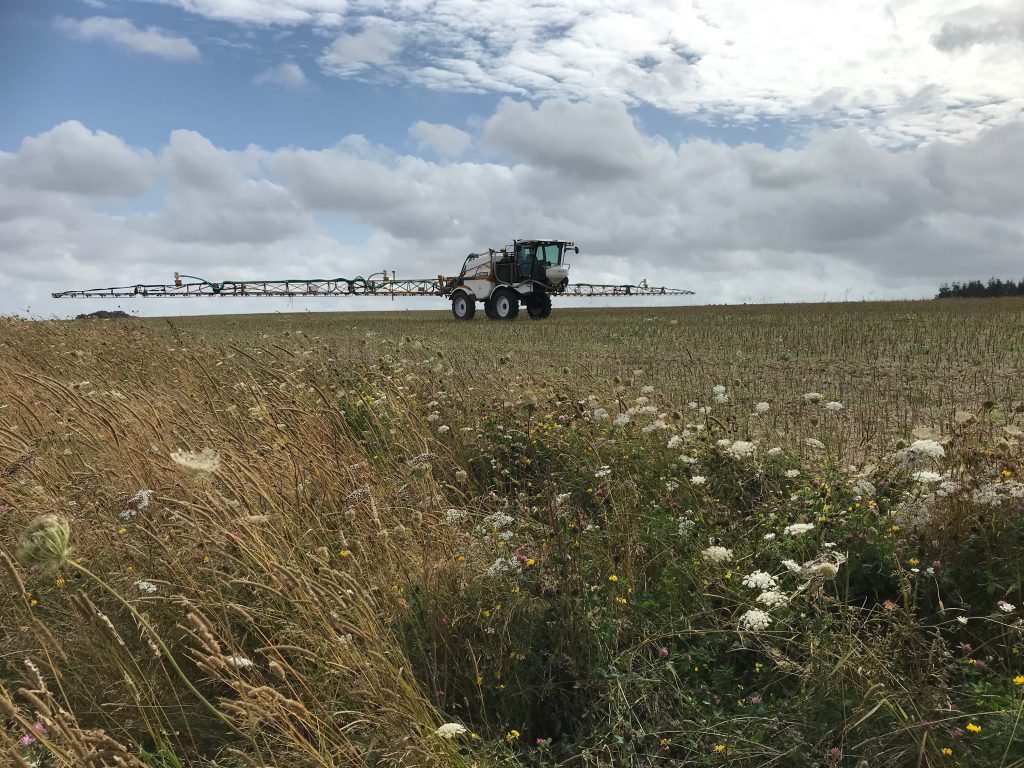
We are using our sprayer to sow a short term cover crop mix into rape stubble. The sprayer has been augmented with 4 spinners along the boom, and a seed hopper on the front, with a hydraulic fan to blow the seed (or slug pellets if required) onto the ground. The wheat which follows this won’t be sown until mid October, and we would like a good diverse mix of roots in the soil by the time we sow, to hand the baton of healthy soil activity on to the wheat. We will also be sowing cover crops into wheat stubbles, if we can ever get them cut, preferably with the Sky drill if there is time, or with the sprayer as above if we are in a corner. One of the secrets of success with cover crops is early sowing, but here we are already at mid-august and not a grain of wheat harvested. The covers are already late.
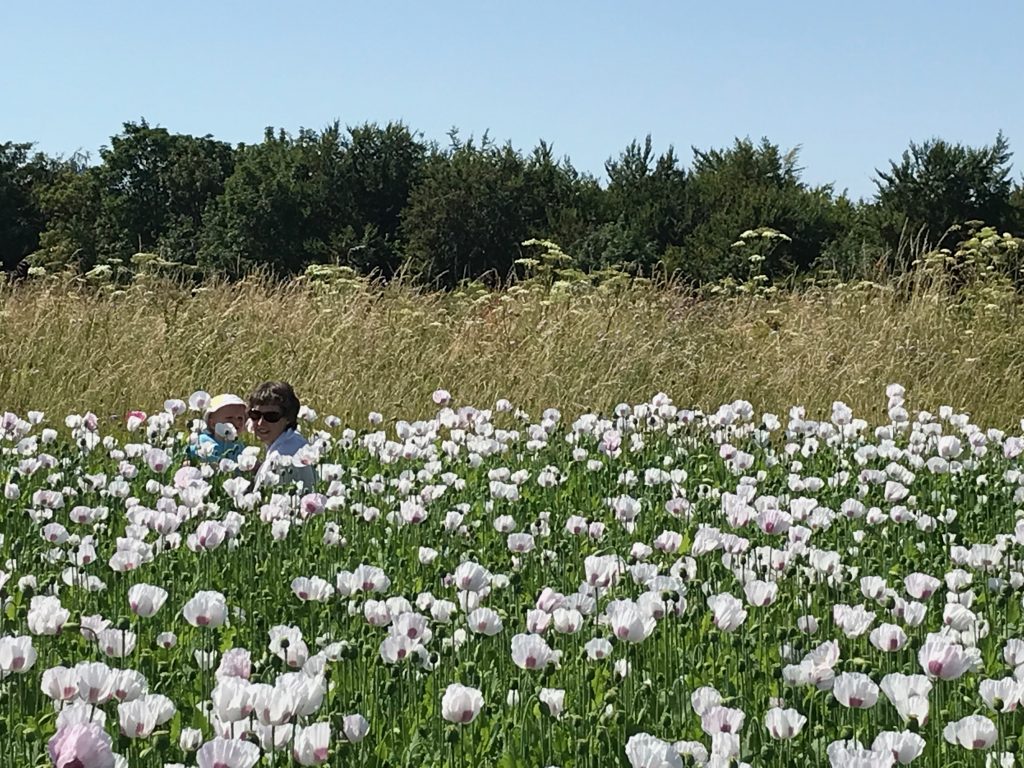
At last the poppies have perked up, the rain in May finally did the trick and more germinated, and for a few days they looked a real picture when in flower. Now sporting plump capsules, we look forward to finding more seed than we did in last year’s embarrassing crop.
Here a wasp dips his mouthparts into a Scabious flower in one of our flowery field margins. Could this be the kind of parasitic wasp who will help us control the dreaded oilseed rape flea beetle? There are many species of wasp, and this is definitely not the commonly disliked one who inhabits pub gardens and apple orchards, threatening to sting anyone who crosses their path. There are some parasitic wasps who lay their eggs in the larvae of flea beetles and other crop pests, and when their eggs hatch, their larvae eat the crop pest from the inside out. Very helpful!
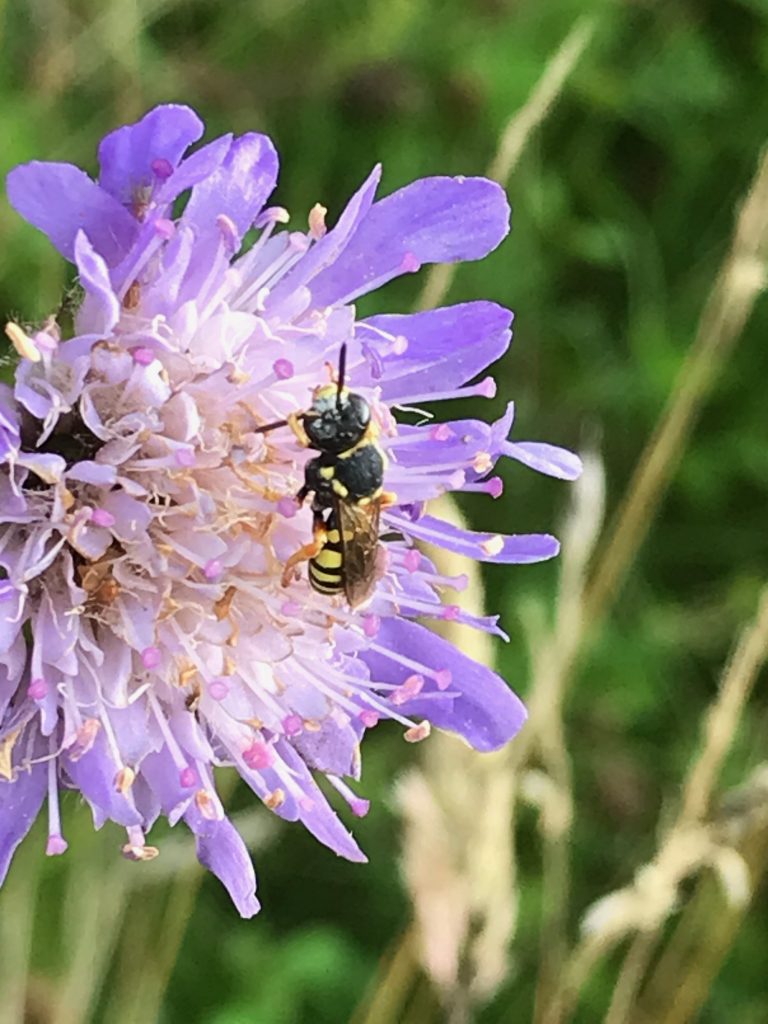
The Scabious seems to be very popular, here is a beautiful peacock butterfly feeding
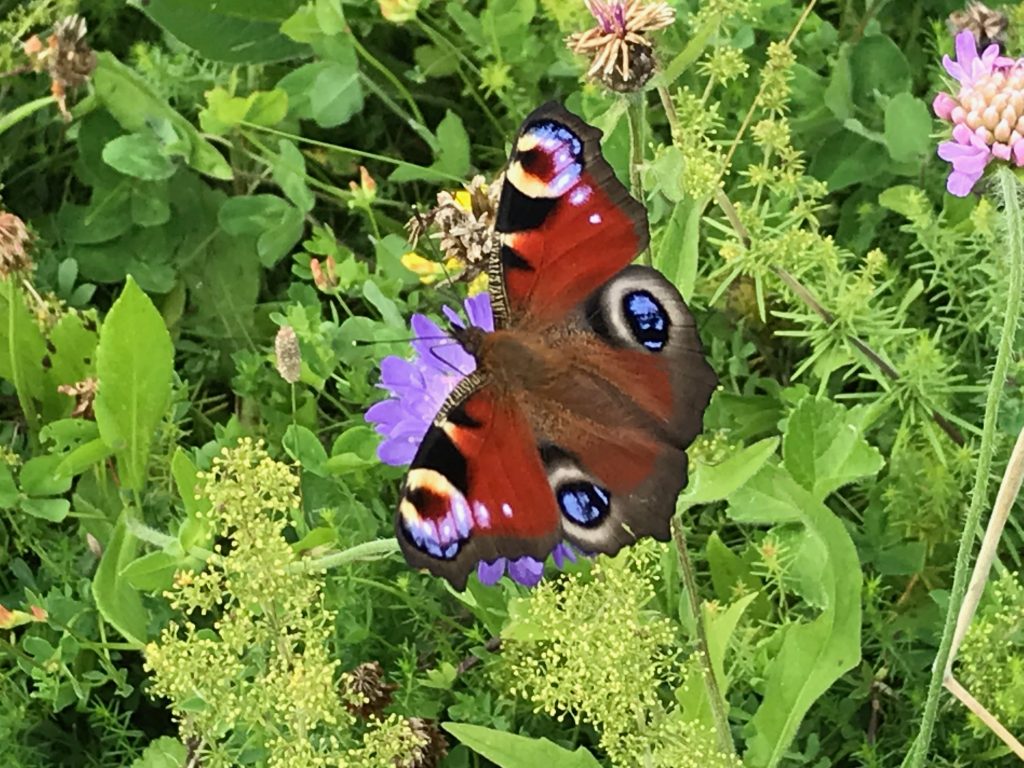
And not far away I found a Common Blue feeding on Birdsfoot Trefoil, showing off her beautiful underwing.
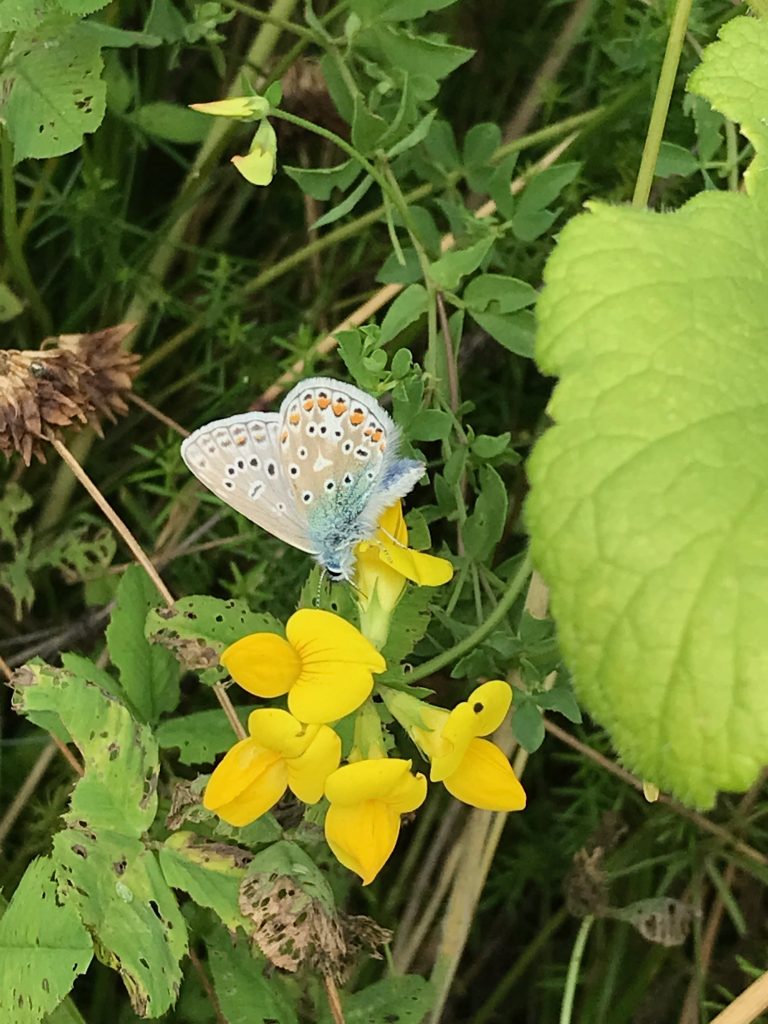
Small Tortoiseshell
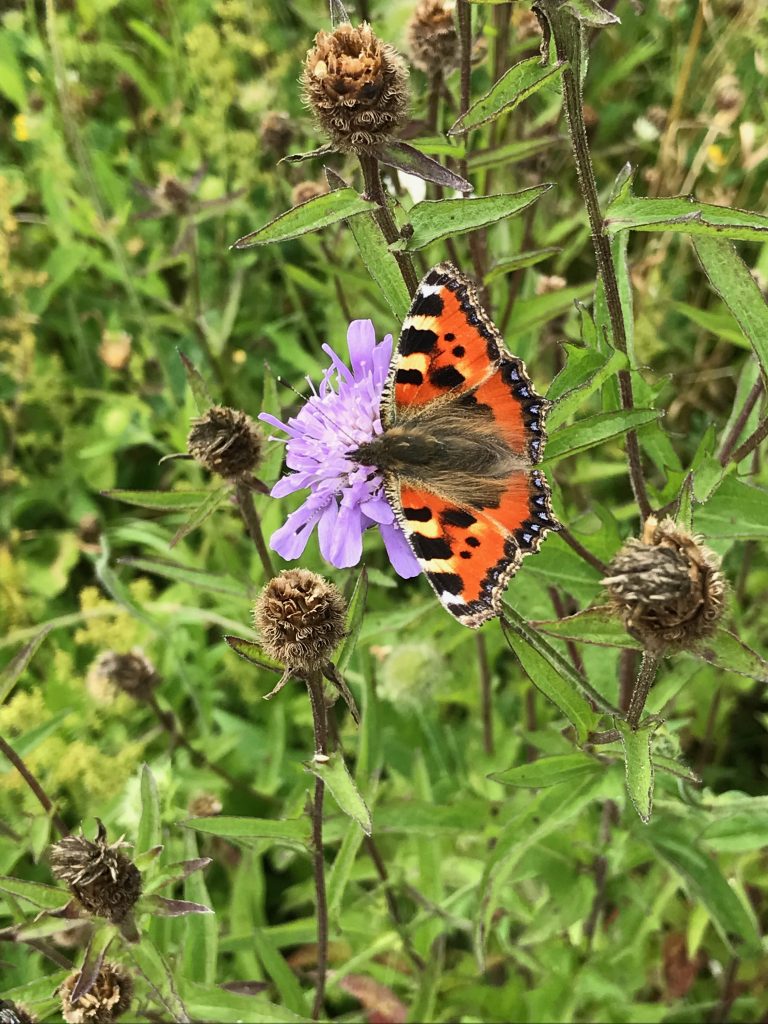
Marbled White
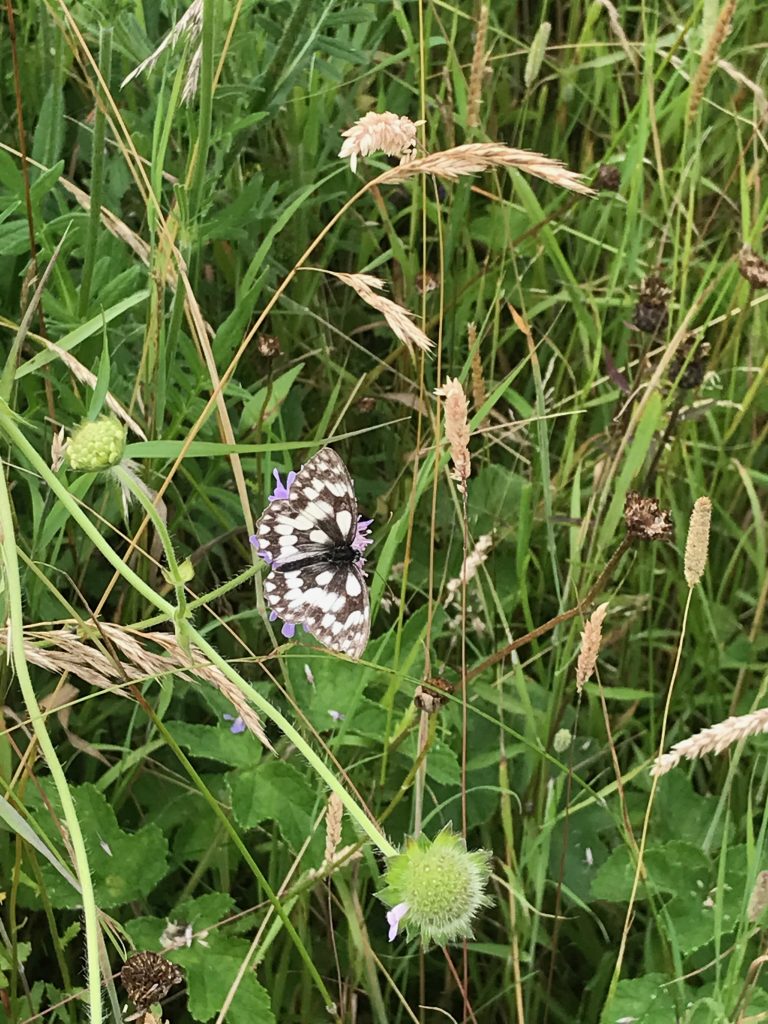
A friend in Lincolnshire has been showing off their super clever precision drill once again. After a ‘Thankyou NHS’ design last year, this time they have plumped for the eco message, nothing at all to do with promoting their popular farm shop!
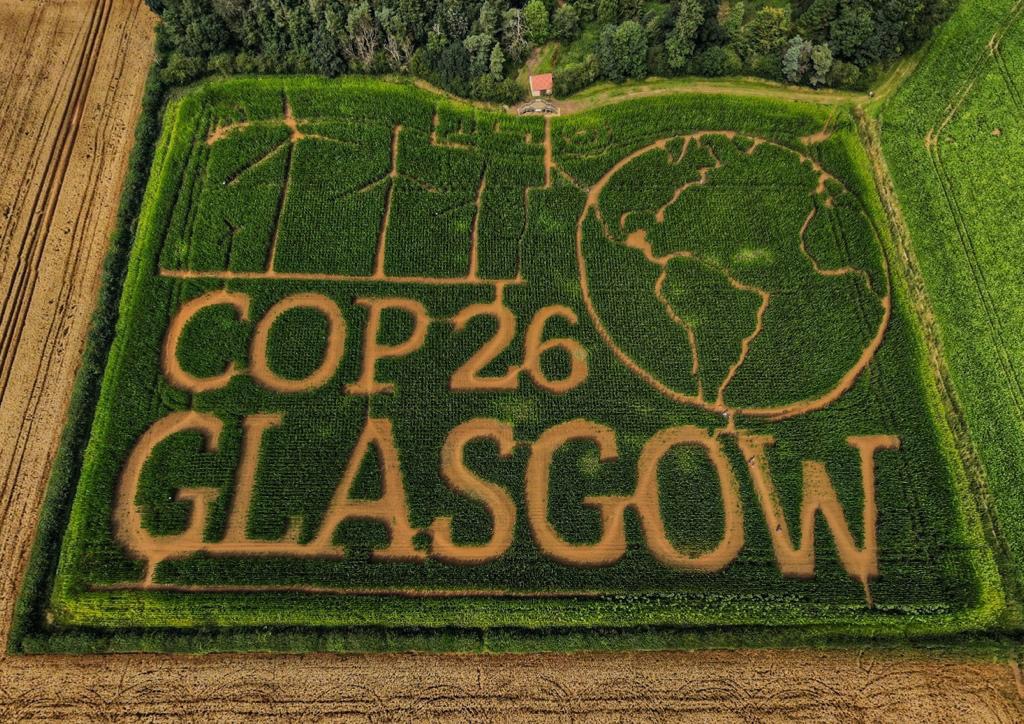
This message is sown in a maize crop.
For an entirely legal and socially distanced party on the farm a few weeks ago, family members cooked up this baked mud covered oven made out of a John Deere oil drum. Fire and chimney at the back, put the door on the front and it gets nice and hot.
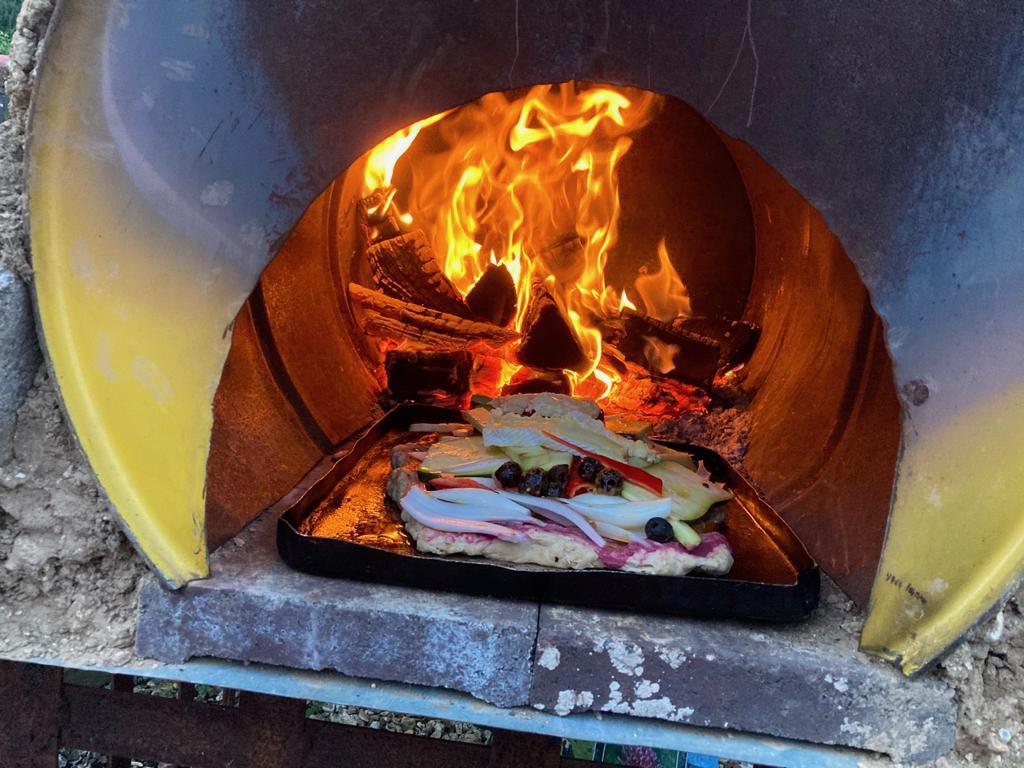
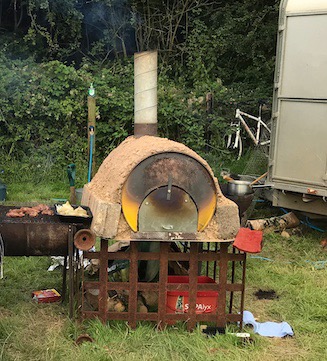
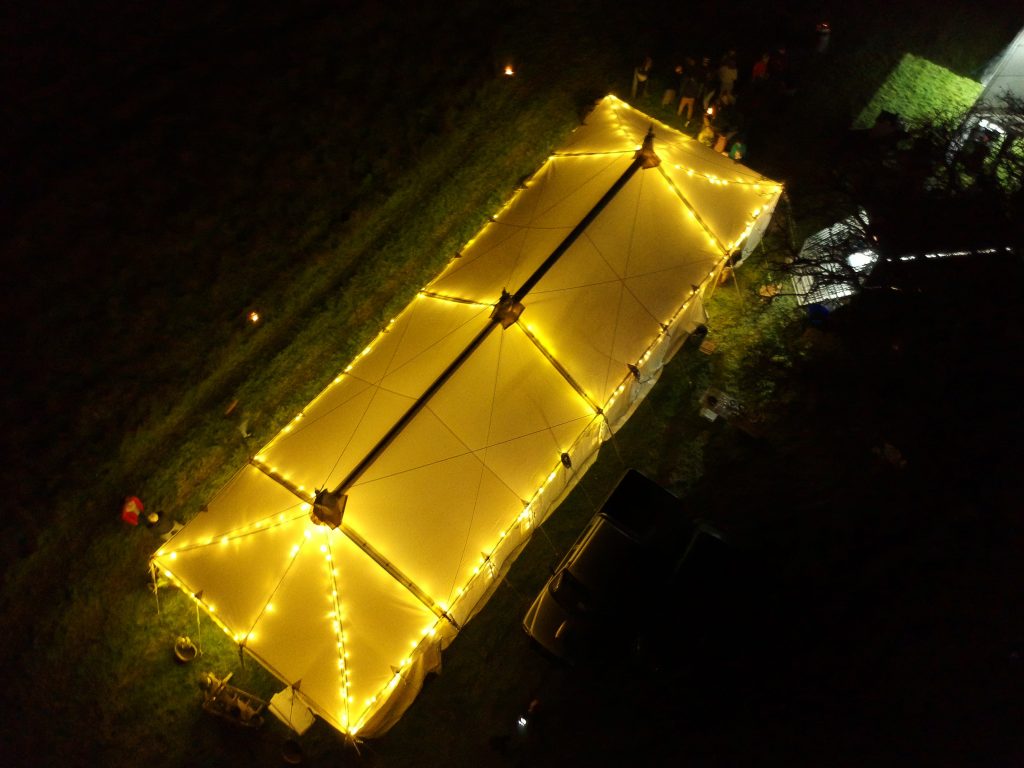
Rocky our oldest pet sheep had a bit of a bird problem, a Magpie kept attacking a sore place on his back, digging deeper and deeper, while the stupid animal just sat there chewing the cud, seemingly oblivious. In the end inventiveness trumped the determination of that foul bird, and a prolapse harness, not commonly seen used on a wether, was employed to provide the basis of a protective cover. The injury is repairing well.
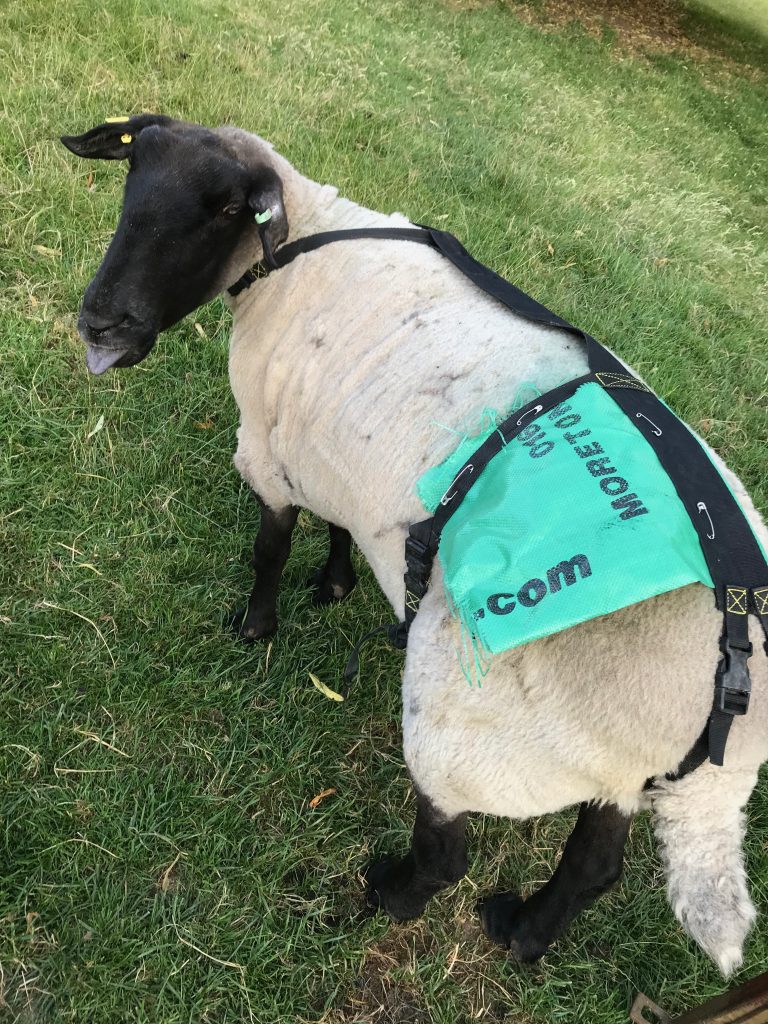
There has been so much going on this month. The picture below is a screenshot from the John Deere app which enables us to see, in almost real time, the progress of the combine. The field featured here was one of several rather flat pieces of spring barley, which we were not proud of, and which presented the combine operator with a bit of a task. He spent nearly as much time going backwards as forwards, as shown here by the red patches. The yield map normally displays a gently coloured field, with lower yielding areas gradually shading into better areas. The conditions here have rendered the yield map almost useless, but do show clearly the grief the driver suffered.
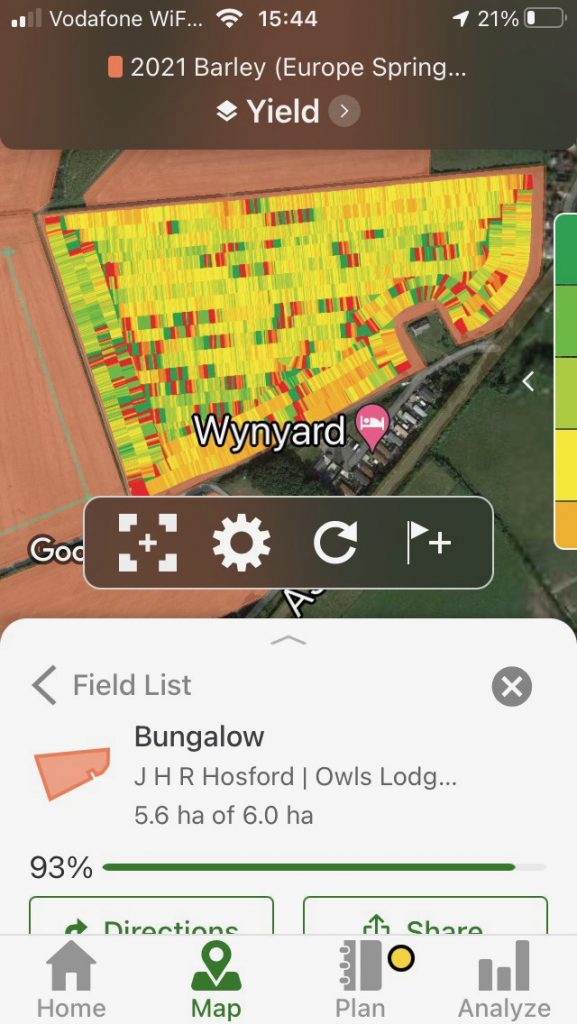
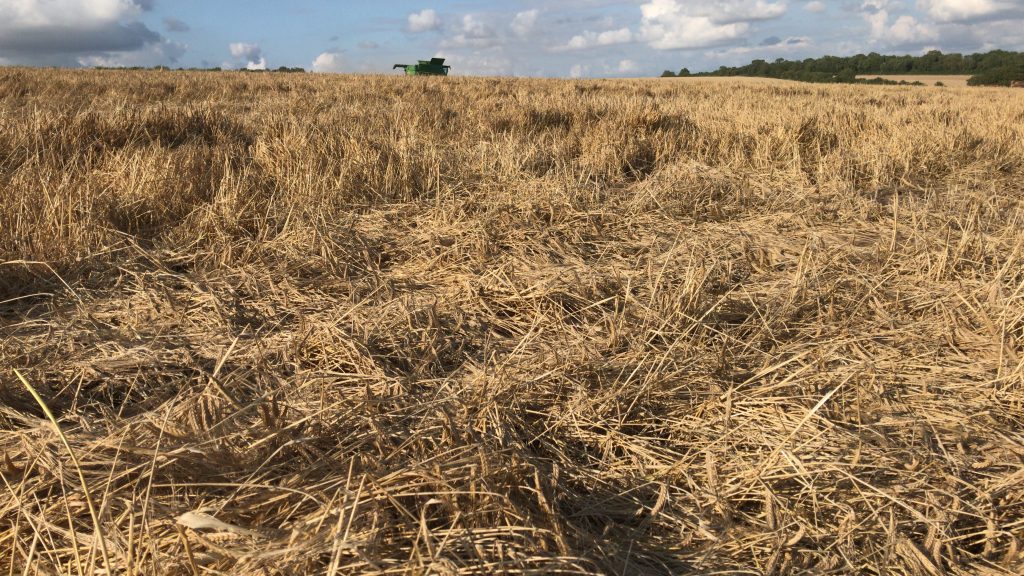
And while on the subject of difficult to harvest crops, this is what happens to crop circles when they have aged a bit, and people have trampled the middle part. Another headache for the long suffering combine driver.
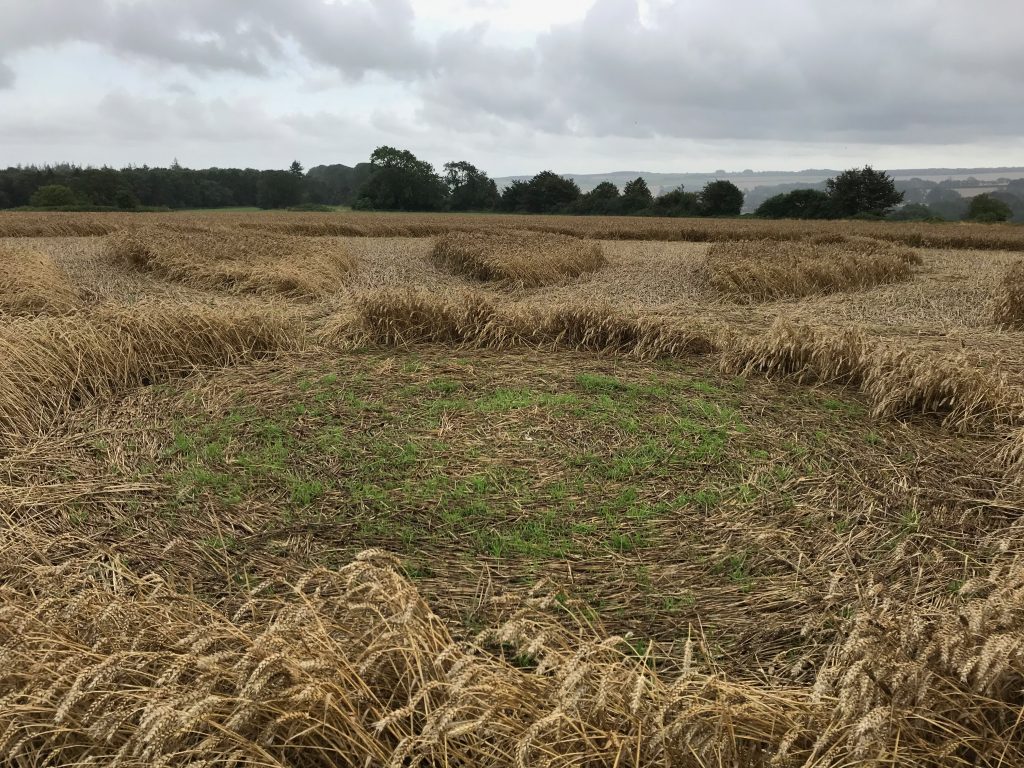
In case we forgot what it looked like earlier on, when the sun was shining……..

Here is our trial field, where we sowed a number of different seeds mixtures, some of them have suffered the same fate of the spring barley above, but before the wind and rain did their worst, they looked quite a picture.
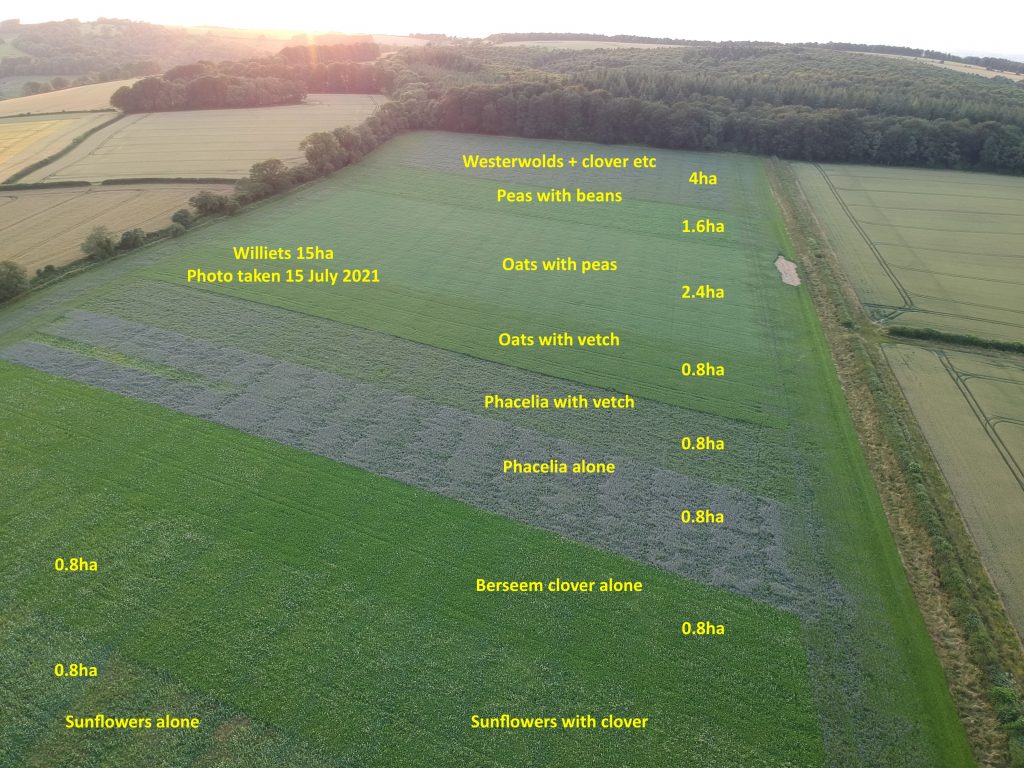
Below shows another trial, where we have been asked to try out a new foliar applied nitrogen product on wheat. The darker areas show where the field had a full application of our usual liquid nitrogen fert, which is applied to the soil and reaches the plant via the roots. The paler tramlines are the ones where we applied the final 50kg per hectare of nitrogen as the foliar product, applied direct to the plant and absorbed through the leaves, or not. The yield maps will be informative. It will be a shame if the foliar product doesn’t work better than the traditional soil applied, because it is more efficient, and environmentally friendly, though sadly not cheaper.
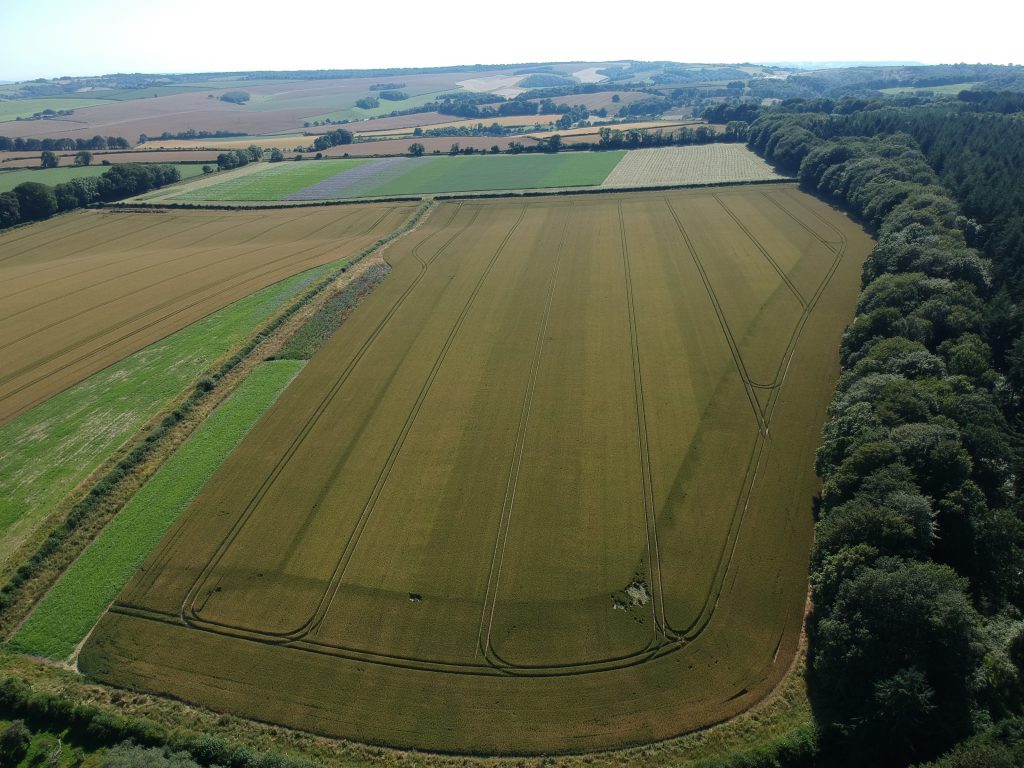

Your team is a great example of the imagination required to be a good farmer, from pizza ovens to prolapse harnesses…Good luck with the harvest! Over here we have yet to make a bale of hay so have converted a shed into a silage clamp. Necessity being the mother of invention.
Another well written piece. and even better than the Celebrity Farmer that I have watched (JC) but all sides of the farming story need to be told Well done . hope your harvesting has gone well,
Older than me farmers tell me that the weather this year is comparable to that of 1958. You could perhaps remember that – getting wet in your pram?
Like Martin, very little good hay made this year which is without precedent in my 40 years of hay making in the dryest county in England.
Our wheat yields are poor, too much wet and not enough sun.
Brilliant plan with the prolapse harness and bag on that sheep and I feel for the combine driver in that barley, ours is similar except no glamourous pictures to display the misery.